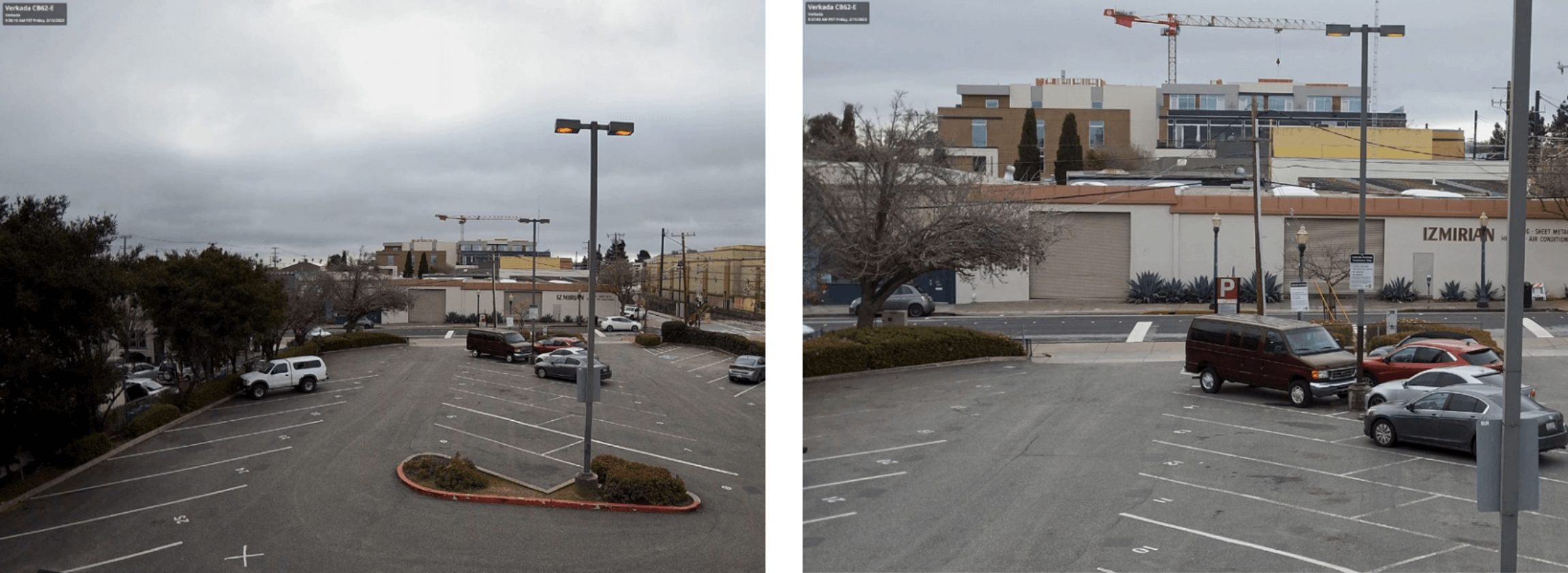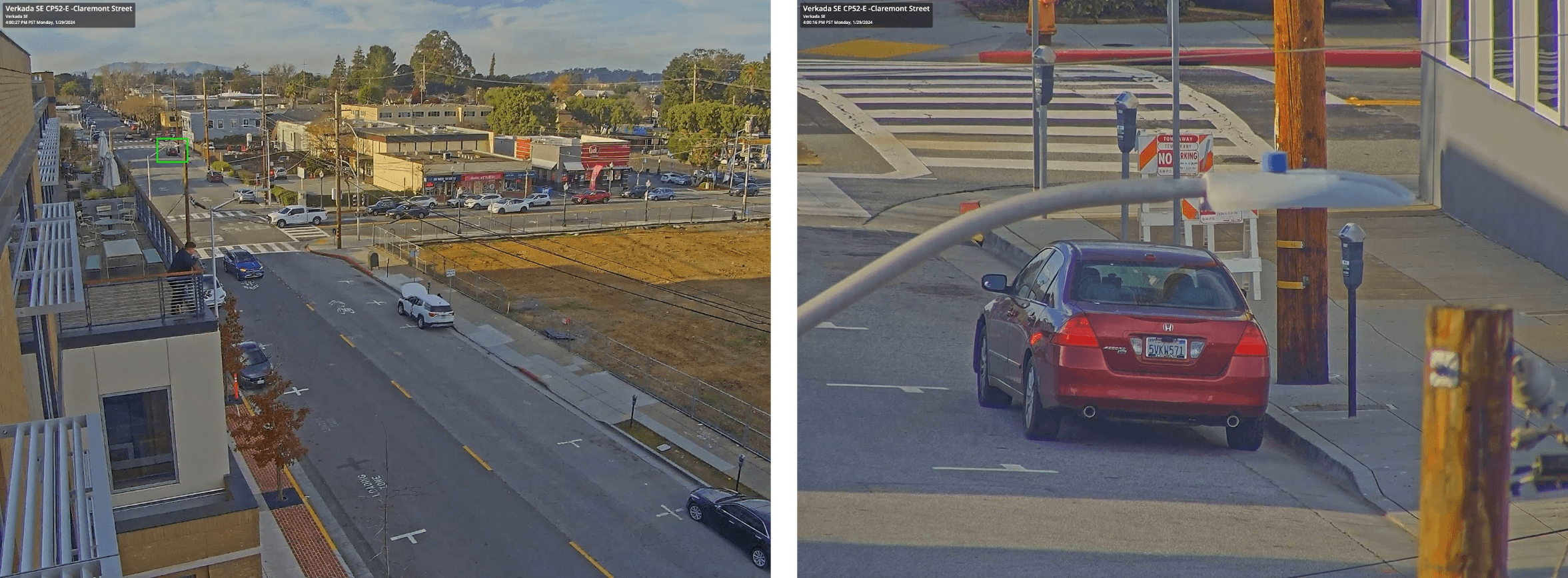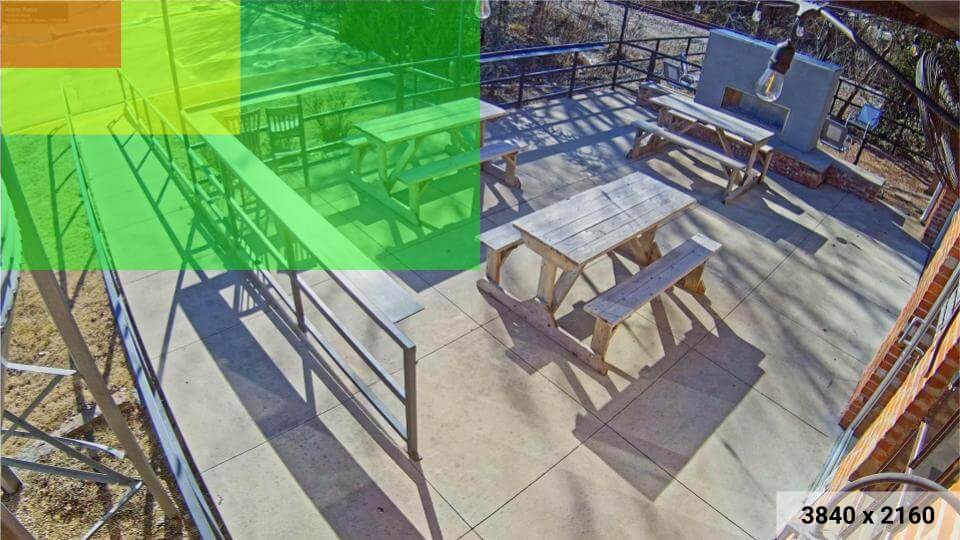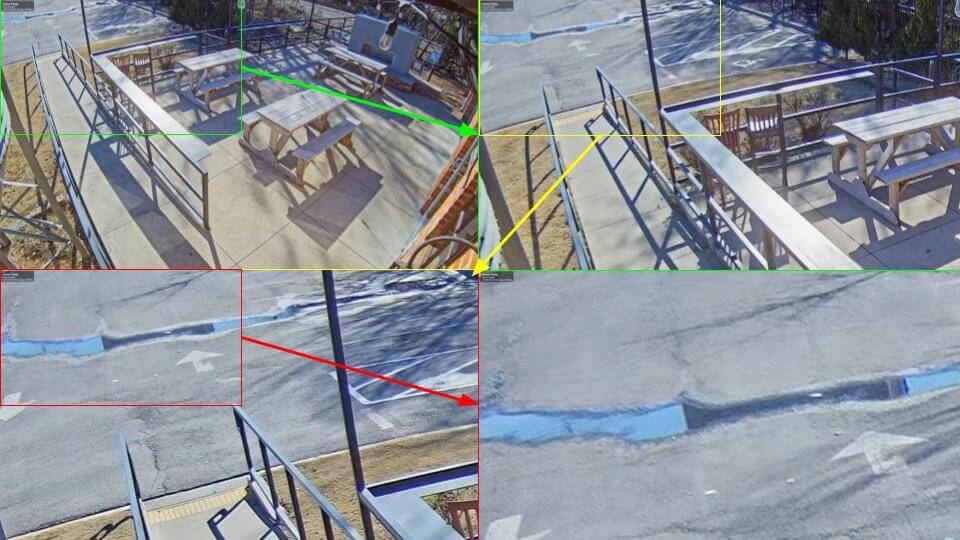Optical Zoom versus Digital Zoom
Zooming in is a common feature in camera systems, involving magnifying a specific area within a larger field of view for closer inspection. Cameras typically employ two methods for this: optical zoom and digital zoom. The key difference between optical and digital zoom is primarily the timing of the zoom process, as well as how the magnification is accomplished. Optical zoom magnifies the scene before the camera’s sensor captures the image, while digital zoom enlarges the image as or after the sensor has captured it.
Optical Zoom
Optical zoom plays a crucial role with video surveillance, as outlined in our Focal Length overview. Security cameras with optical zoom, like the Verkada CB62-E bullet camera, allow for adjustments to be made to their focal length to ‘move’ closer to the subject. This change magnifies and narrows the field of view while preserving the image’s full resolution. Importantly, optical zoom ensures that the resolution (3840 x 2160 in this case) remains constant regardless of zoom level.
As shown in Figure 1, the same camera offers varying fields of view—from the widest to maximum zoom. Importantly, optical zoom magnifies before the sensor captures the image, ensuring that the resolution (3840 x 2160 in this case) remains constant regardless of zoom level.

The flexibility provided by optical zoom is particularly useful in various scenarios:
- For Distant Surveillance: Ideal for monitoring large parking lots, entrances to parking lots or properties, and distant buildings or objects when the area of interest is far from the camera’s mounting point.
- For Detailed Observation: Useful in obtaining a closer, more detailed view of specific areas, especially beneficial where analytic features are employed (E.g. license plate recognition). Typical examples include facility entrances, lobbies, elevator vestibules, and security checkpoints.
When leveraging optical zoom, the camera focuses on a smaller area, thus excluding portions visible when zoomed out. This necessitates careful consideration to ensure that key areas of the field of view aren’t unintentionally excluded. Furthermore, cameras equipped with optical zoom tend to be slightly more expensive than their fixed focal length counterparts, reflecting the added complexity and functionality of the zoom mechanism.
Fixed Position vs. Moveable Options
Many manufacturers provide cameras with optical zoom tailored for specific scenarios. Often, cameras are fixed to monitor a particular scene continuously, like a wide view of a parking lot. However, for dynamic, comprehensive live monitoring, cameras with optical zoom that can be repositioned in real time are beneficial. These are known as PTZ (Pan, Tilt, Zoom) cameras. They can pan left or right, tilt up or down, and optically zoom in, offering a versatile range of motion. PTZ cameras typically have a broader focal length range, allowing users to zoom in on distant objects or obtain close-up views of nearby subjects. As illustrated in Figure 2, the effectiveness of a 30x optical zoom PTZ camera is evident in its ability to read license plates from great distances.

(green area = image on right)
on vehicle approximately 470 feet away
Digital Zoom
Digital zoom, unlike optical zoom, is a feature available in almost all camera types, including mobile phone cameras and nearly all surveillance cameras. It works by software manipulation, either during or after image capture, to magnify a portion of the camera’s field of view.
During Capture
In the first method, commonly seen in mobile phone cameras, the user selects a subset of the zoomed-out field of view to record, which is then digitally enlarged to the camera’s full resolution. Figure 3 illustrates this with two images from an Apple iPhone 13 at the same resolution. The digitally zoomed image (right) is notably smaller in file size and shows noticeably less detail compared to the full view (left). Digital zoom also restricts the ability to revert to the full scene.

Resolution: 4032 x 3024
File Size: 6.6MB
Resolution: 4032 x 3024
File Size: 1.3MB
After Capture
The second method involves software used for viewing the camera’s output. It enlarges a selected area of the field of view without altering the original image or video. A familiar example is the ‘pinch out’ gesture on mobile phones. Verkada implements this with a 3-step digital zoom, where each step enlarges one-quarter of the view to full resolution (Figure 4a). The camera always captures the full scene, allowing users to zoom in digitally for a closer look. Exported digitally zoomed images maintain the original resolution (3840 x 2160), but file sizes decrease progressively as the zoom level increases, reducing the visible area (Figure 4b).


Why Optical Over Digital Zoom
Digital zoom offers convenience and flexibility in video surveillance, allowing users to briefly examine specific areas or activities within footage while maintaining an overview of the broader scene. Its easy accessibility across camera types and software interfaces makes it a handy tool for quick inspections. However, the utility of digital zoom reduces as the zoom level increases, leading to a loss of detail. A consistent need to closely monitor particular areas using digital zoom indicates a requirement for a more robust solution.
Optical zoom, with its capability to preserve image quality at various zoom levels, provides an ideal alternative for detailed and distant observations. It is especially beneficial in surveillance scenarios demanding high resolution and clarity, such as license plate recognition or facial identification. Choosing the correct type of zoom—optical for detailed, permanent focus or digital for occasional, broader inspections—depends on the specific surveillance needs. Understanding these differences is key to ensuring that surveillance systems are effective and efficient, tailored to monitor critical areas with the appropriate level of detail and clarity.
If you’re looking for high-quality, reliable security solutions that leverage the power of optical zoom, Verkada offers a range of modern, advanced security cameras for all security requirements. Don’t compromise on safety and clarity—contact us today to learn more about our cutting-edge optical zoom security cameras and how they can enhance your surveillance strategy.